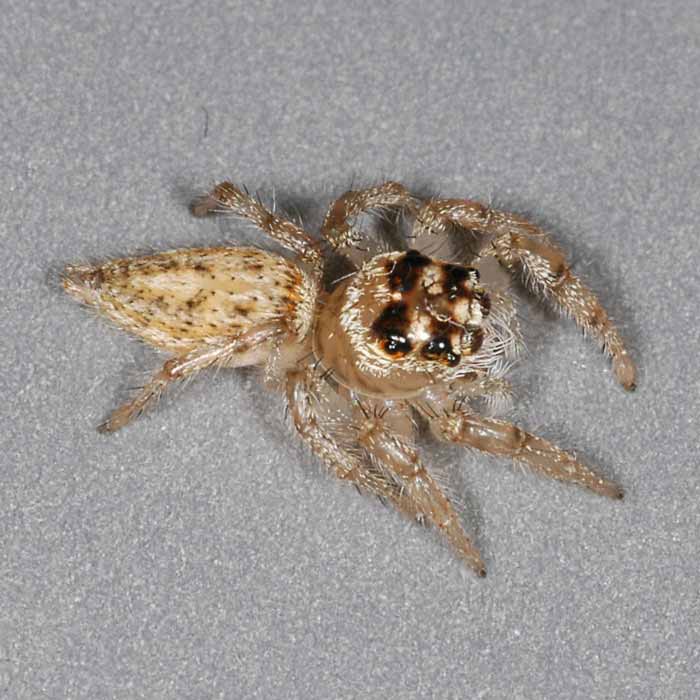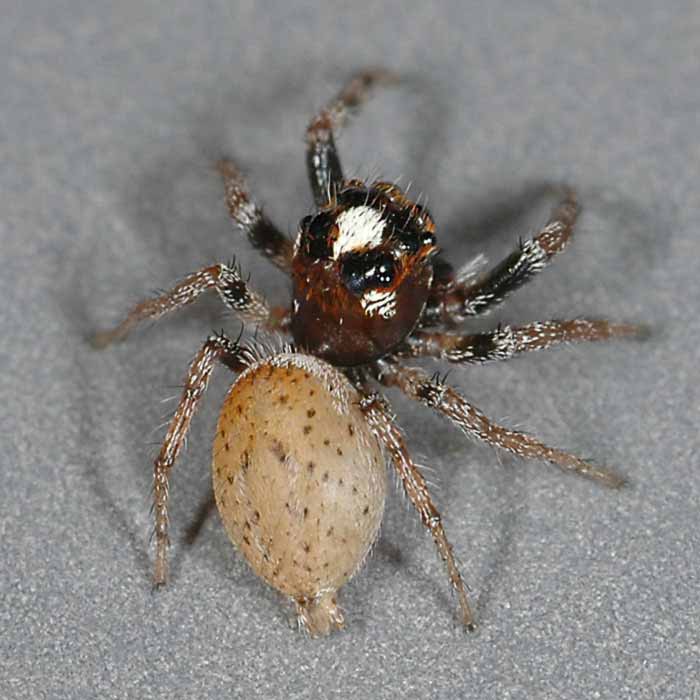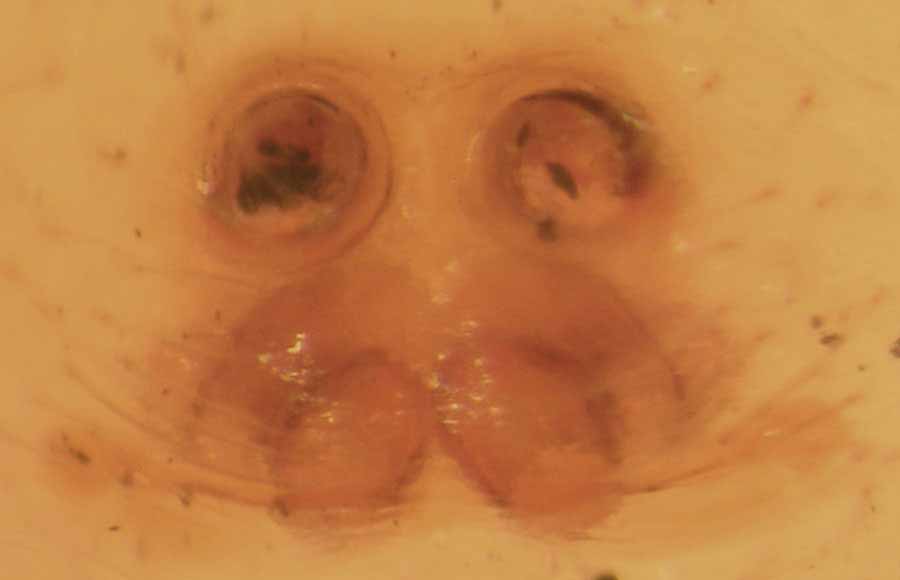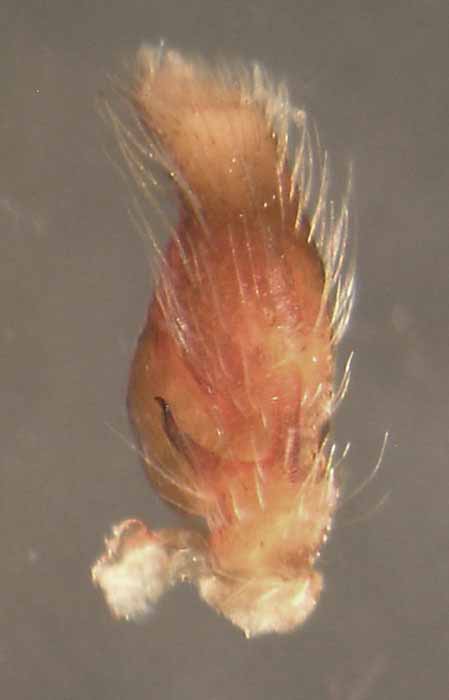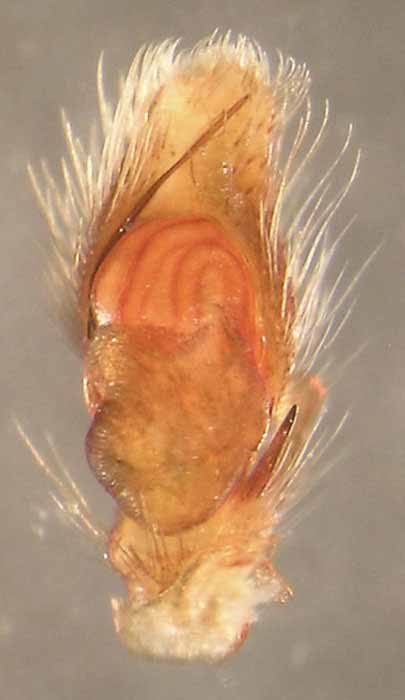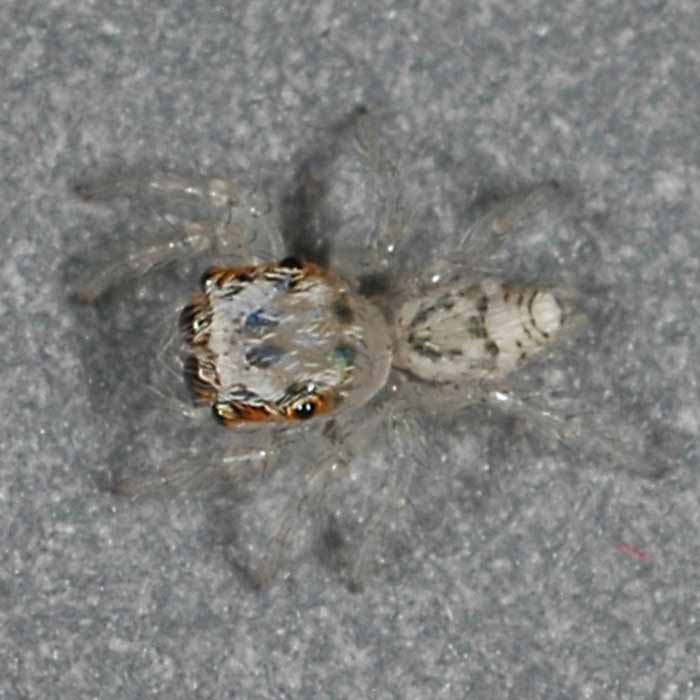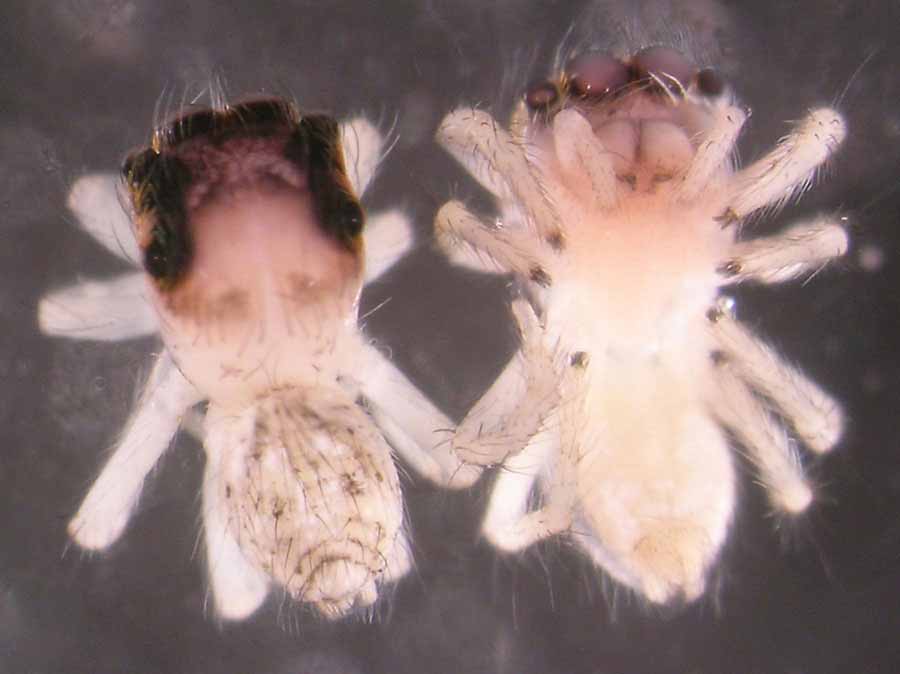Thiodina hespera
|
adult female, live |
|
adule male, live |
|
female genitalia; epigynum |
|
male genitalia; palp, lateral view |
|
male genitalia; palp, ventral view |
|
grape size comparison with adult spiders; male (left), female (right) |
|
spiderling, live |
|
spiderlings, dead; dorsal (left), ventral (right) |
|
egg sac |
|
egg sac with scale (cm) |
Current valid name
Thiodina hespera Richman and Vetter (family Salticidae)
Recognition and diagnostic features
Jumping spider, two pairs of bulbous setae on the ventral surface of tibia I, typical jumping spider body shape but with elongate abdomen tapering at the posterior end. Females and immatures tan and pale with 4 black dots on anterior portion of cephalothorax. Males with dark cephalothorax and white scales.
Spider
Body lengths when mature: male: 5.6 mm, female: 7 mm
Sexual dimorphism in matures, immatures resemble miniature females, males have dark cephalothorax.
Egg sac
Description: retreat-like sac, white silk, female stays inside and guards eggs, 11.9 mm wide, 24.2 mm long
Number of eggs per sac: 26.0 ± 11.7
Size of egg: 1.19 ± 0.077 mm
Time of year eggs are likely to be laid: May through August
Distribution
In California: throughout the state
Elsewhere: Arizona, New Mexico, Utah
Native to North America
This species has not been transported or become established outside of its range.
Biology
Diurnal hunting spiders. Peak abundance is in May, although this may reflect more concentrated collecting efforts rather than actual population peaks. Common in citrus and in homes.
Status in table grapes
Level of Incidence: uncommon
Level of Concern in New Zealand: WPNZ (May 2010) nr, BORIC (Dec 2011) nr (not listed), MAF-BPRA (2002) nr (coding definition)
Level of Concern in Australia: WPAU (2006) nr (coding definition)
Level of Medical importance: none
Common name
None
Taxonomic history
Although this species was only named in 2004, it may have mistakenly been referred to as the eastern species T. sylvana or T. puerpura in the literature.
Selected references
Richman, D. B., and R. S. Vetter. 2004. A review of the spider genus Thiodina (Araneae, Salticidae) in the United States. J. Arachnol. 32: 418-431.

